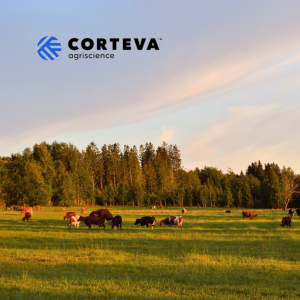It’s not too late to treat your pastures. Fall is an ideal time to catch up on weed control, especially following wetter than normal weather conditions.
Too much. Not enough. Seldom just right. That’s how it often goes when it comes to precipitation. No matter how you’re set for moisture this fall, now is the time to make sure weeds don’t steal it.
Many areas have experienced back-to-back above-average spring rains. Although great for growing grass, it’s not so good for timely pasture spraying or any spraying at all in some cases. Fortunately, fall is an ideal time to catch up.
“For many reasons — and many weed species — now is a good and important time to manage undesirable plants in rangeland and pastures,” says Dr. Scott Flynn, a field scientist for Corteva Agriscience. “Forage grasses and other desirable plants need this time to recover from the grazing season, and they can do that better and more quickly without competition from weeds.”
This is a good time to treat pastures for other reasons, too. Although there’s always plenty to do, you — and custom applicators — likely have a bit more time, compared with the busy spring. Biennial and perennial weeds remain active and susceptible to herbicides even past the first frost. By then, most sensitive crops are harvested, and many desirable plants are dormant.
Fall applications perform well because the herbicide moves from the foliage to the roots along with the plant’s winter food reserves. In the spring, carbohydrates move from the roots to the leaves, so less downward herbicide movement occurs.
“Treatments often produce better results on several species during the fall. And that means a better return on your herbicide investment,” Flynn says, pointing to these species as some of the best targets for fall weed control:
- Annual weeds: henbit, common chickweed, field pennycress, and yellow rocket
- Biennial weeds: bull, musk, and plumeless thistle; and spotted knapweed
- Perennial weeds: Canada thistle and dandelion
“Treatment can begin as soon as new growth appears and can continue right up through the first frost,” he notes. “But avoid treating during drought. Herbicides will not be as effective.”
Visit a Farmers Co-op location or visit us online to see our treatment selection.
The accompanying table offers recommendations for several common fall weed targets. Visit RangeAndPasture.com for additional species and recommendations.
DuraCor® Herbicide Recommendations for Tough Rangeland and Pasture Weeds:
- 12 to 16 fluid ounces per acre -Biennial thistles (musk, bull, plumeless), wild carrot, poison hemlock, wild parsnip, hawkwweds, knapweeds, yellow starthistle, henbit, common chickweed, dandelion
- 16 to 20 fluid ounces per acre – Rusk skeletonweed, Canada thistle, common mullein, Scotch thistle
Article brought to you by Corteva Agriscience



